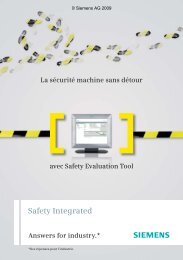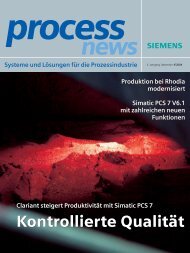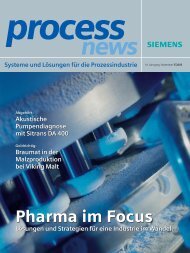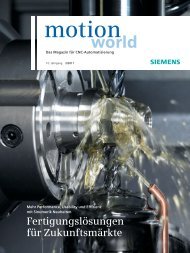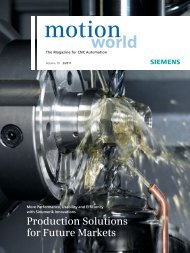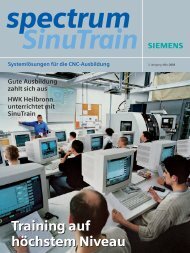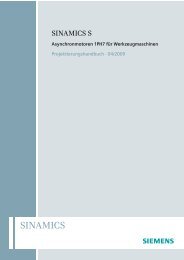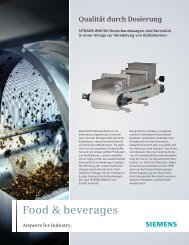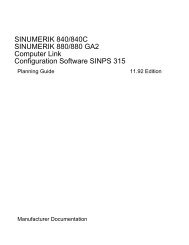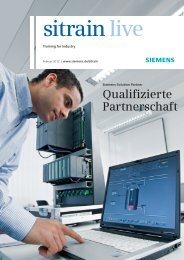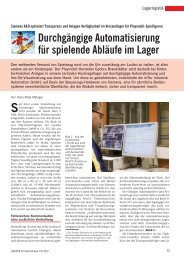Configuration Manual Synchronous Motors 1FK7 - Siemens ...
Configuration Manual Synchronous Motors 1FK7 - Siemens ...
Configuration Manual Synchronous Motors 1FK7 - Siemens ...
You also want an ePaper? Increase the reach of your titles
YUMPU automatically turns print PDFs into web optimized ePapers that Google loves.
4.3.2 Brake types<br />
Brakes with different principles of operation are used:<br />
• Permanent-magnet brake<br />
• Spring-operated brake<br />
Both of the brake types operate according to the closed-circuit principle.<br />
Mode of operation of a permanent-magnet brake<br />
Motor Components (Options)<br />
Holding brake<br />
The magnetic field of the permanent magnets results in a pulling force on the brake armature<br />
disk. This means that in the no-current condition, the brake is closed and the motor shaft is<br />
held.<br />
When 24 V DC rated voltage is connected to the brake, the solenoid – through which current<br />
flows – establishes an opposing field. This neutralizes the force of the permanent magnets.<br />
Permanent magnet brakes have a proportionally stiff connection to the motor rotor. This is the<br />
reason that this brake is almost without any play.<br />
Caution<br />
<strong>Motors</strong> with integrated permanent-magnet holding brake cannot be subject to axial forces at<br />
the shaft end! This applies when installing the system and during operation.<br />
Mode of operation of a spring-operated brake<br />
For a spring-operated brake, instead of the magnetic field of a permanent magnet, the force<br />
of a spring is used.<br />
In order for a spring-operated brake to operate, the brake armature disk must be able to<br />
axially move. Therefore, torsional backlash cannot be avoided. When the brake is closed, the<br />
motor shaft can move by up to 1°.<br />
Effect for hanging axes:<br />
The motor brakes a hanging (suspended) axis electrically. If the brake is applied and the<br />
power is then disconnected, it is possible that the load could continue to move the motor<br />
shaft. In this case, the maximum possible motion corresponds to the above mentioned play in<br />
the gear meshing. The motion is appropriately stepped-up or stepped-down using a mounted<br />
gearbox.<br />
Danger<br />
Applications involving holding brakes for hanging/suspended axes must be especially carefully<br />
investigated as these represent a high potential hazard.<br />
For motors with spring-operated brake, it must be carefully checked that the brake is suitable<br />
due to the rotational play.<br />
For motors with spring-operated brakes, axial forces are permissible the same as for versions<br />
without brake.<br />
<strong>1FK7</strong> <strong>Synchronous</strong> <strong>Motors</strong><br />
<strong>Configuration</strong> <strong>Manual</strong> (PFK7), 10/2005 Edition, 6SN1197-0AD06-0BP1 4-11



